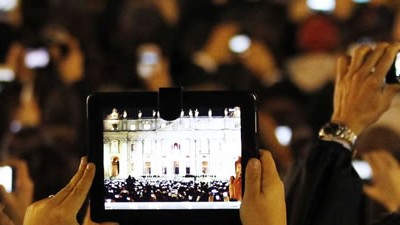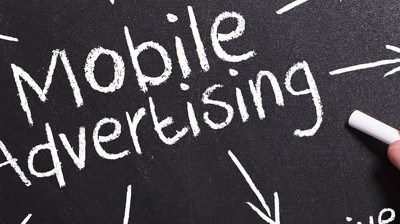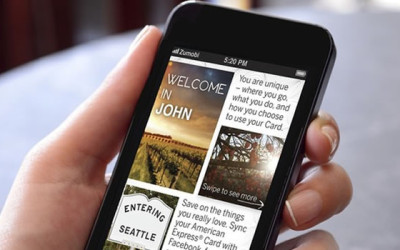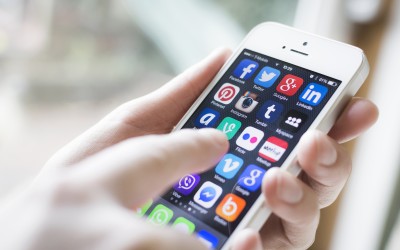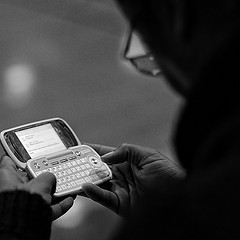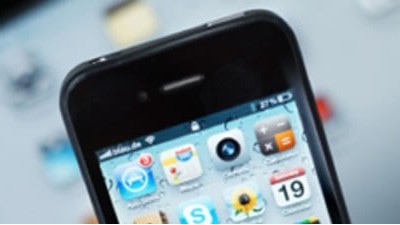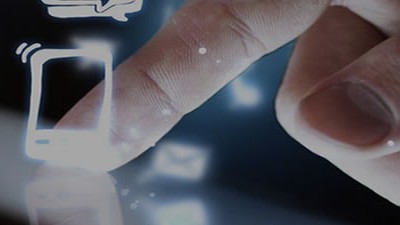Welcome to our Blog!
Everything about Mobile Advertising!
Everybody Loves Mobile
We’ve written plenty of pages during the course of this blog around why brands should go the mobile marketing route. Perhaps it is time now to shine the spotlight on the individual people who work within client organisations and outline what mobile could mean to them. It’s important from a buy-in perspective to ensure the individual personalities within corporations see the value of mobile marketing when it comes to their specific organisational objectives. The Sales Director will find that mobile marketing enables current and potential clients to rapidly convert intention into actual purchasing behaviour. Mobile marketing means mere seconds can pass from the time a consumer is interested in a product or service, to the time they buy. The Finance Director will be pleased with mobile marketing’s almost immediate impact on the bottom line. Cash flow is boosted while costly inventory is reduced due to the up-to-the-minute statistical information that can be provided by mobile. The Marketing Director will see the company’s reputation climb to new heights as the brand is positively impacted by well-executed mobile marketing campaigns. Consumers appreciate it when brands make it easier to transact with them and do so in slicker and cleverer ways. The world’s love affair with technology is only just beginning and mobile marketers will continue to ride the crest of this...Mobile Marketing Improves The Bottom Line Of For-profit And Non-profits Alike
With recent news that WASPA (the Wireless Application Service Providers’ Association of SA) has reduced the cost of becoming an Affiliate Member for registered non-profit organisations by 90%, and the fact that we’re in the annual season of giving, it’s perhaps a pertinent time to take a look at mobile marketing for NGOs (non-governmental organisations) and charities. The days of dedicated individuals standing near shop doorways shaking tins full of copper coins might not be totally over, but they’re disappearing fast. As many a car guard is discovering to their annoyance, it’s becoming harder and harder for the average person to actually locate a coin in their wallets, pockets or handbags. With a combination of ubiquitous card machines to be found everywhere from your major retailer to the guy who cleans your pool, and mobile payments made via cellphone becoming so much easier, who needs – or wants – hard cash these days? I love m-commerce and cellphone banking because it’s so much easier to budget for things. Who can budget properly after withdrawing copious amounts of cash from the ATM? In my home, it just seems to disappear without a trace! With all of this happening in the marketplace these days, it’s a wise charity that invests in a proper mobile marketing effort. Many mobile marketing firms will offer their services to registered non-profits at a reduced rate, or even pro-bono, so InTarget’s advice to these worthy organisations is not to try and embark on a mobile marketing effort on the cheap. The result will be nasty. Don’t be afraid to approach a quality mobile marketing organisation that can serve as a trusted advisor to your charity. Advice is free and we’re willing to give it in our own...Mobile Marketing And Small Business
Small businesses are the engine of the South African economy with over 60% of employed people in the country working for an SME (small and medium-sized enterprise). As we’re about to enter another 12-month stretch with the usual hope that the economy will achieve a decent GDP growth of well over 2 percent, let’s take a look at some mobile marketing tips specifically designed for SMEs. Perhaps these helpful hints can play some small part in boosting small business! 1. Is your SME ready for mobile marketing? The most basic starting advice InTarget can offer is for the small business owner to properly assess whether the firm is, in fact, ready for mobile. There’s no sense in driving consumers to your mobile brand if a properly-designed mobile experience hasn’t been designed in partnership with a mobile marketing advisor like InTarget. 2. A mobile-friendly version of your website is key Another thing the SME needs to do in terms of laying down essential mobile marketing groundwork is to build a mobile-friendly (or .mobi) version of its website. Proportionally, far greater numbers of South Africans access the web via smarthphones and featurephones, as opposed to laptops and desktops. So you need a site that looks great on the small screen or risk frustrating potential customers and losing them in the process. 3. SMS-based mobile marketing must offer something personal and special SMEs need to ensure that they take full advantage of the advantages offered by text message-based mobile marketing. Text ads need to be properly-designed to achieve maximum bang-per-buck for cash-strapped small business. According to CIO.com, any text message sent to a mobile shopper must offer something worthy of the very personal interruption. Research by mShopper.com shows that...More AD spending more video in mobile marketing 2016
Tomorrow is the first day of the last month of 2015. Now let me tell something else you already knew: mobile adoption is huge and the consumer’s purchasing of goods and services via mobile continues to rocket skywards. As we move towards another year it might be a good idea to take stock of where we are with regards to mobile marketing by checking out some facts and stats predicted for 2016. Globally, a significant c milestone will be achieved. According to new figures from eMarketer, cellular consumers worldwide will be exposed to some USD100 billion in digital ads served via their mobile devices. This is an incredible 430% increase compared to 2013. Africa’s mobile marketing sector will be amongst the top performers in percentageterms – so remember InTarget is one of the few South African mobile marketing firms with a credible and extensive footprint in Africa. It’s always tricky translating overseas data into meaningful local stats, but in 2016 it’s been suggested that over 60% of web traffic will come from mobile devices as opposed to desktops. I’d like to suggest that measure is probably closer to 80% in South Africa owing to the nature of our economy. Finally, video is set to expand again next year. The fact that – again, globally – YouTube is the second largest search engine after Google means that the mobile marketer who is already starting to incorporate more video into their campaigns is ahead of the curve in SA. It’s been said that, on average, people watch two online videos per day. If one considers that the impact a 60 second video...Taking advantage of Black Friday and Cyber Monday
The American sales tradition of Black Friday, scheduled annually for the fourth Friday in November, seems to have at last infiltrated our shores to a very good degree. Coupled with the traditional discount fest of Black Friday is Cyber Monday which was created to persuade consumers to shop online.
Three tips for effective text tag ads
InTarget continues to partner with some of South Africa and the Continent’s leading brands when it comes to exploiting the awesome mobile marketing opportunities offered by the ‘Please Call Me’ service.
USSD & SMS remain powerful across handset categories
While conventional wisdom has it that Africa is a continent of feature phone users, TechCentral reported a few months ago that in 2019, only 27% of cellphones sold in Africa will be feature phones. The vast majority will be smartphones with 155 million units being shipped next year alone. According to research by International Data Corporation (IDC), feature phone sales are declining by 20 percent every year.
Mobile 150% penetration means massive bang per buck
Mobile’s rise since GSM technology first made its appearance in South Africa during our transition to democracy has been well-documented as it continues to achieve major milestones. The first major milestone was when the country achieved 100 percent mobile penetration and a second major milestone event was when the number of people accessing the web on mobile devices eclipsed those accessing it via desktop computers. In January 2015, there were a staggering 79.1 million mobile subscriptions in South Africa, according to the Global Web Index report by international agency, We Are Social. This means mobile subscriptions as a percentage of the total population was sitting at a whopping 146% almost one year ago. There’s reason to expect the figure is now well over 150%. What this means for mobile marketers, and I don’t think this has as yet been fully-appreciated by brands, is that mobile offers even greater value than we thought as mobile campaigns are potentially impacting each consumer one and a half times over. That’s because each consumer has 1.5 cellular phone subscriptions. So mobile marketing really does offer the best bang per buck and it’s even more efficient when campaigns are designed in collaboration with expert advisors such as InTarget. Let’s summarise. Mobile is growing, other avenues are declining. Mobile also offers the most efficient way to market a product or service. Finally, the fact that specialist mobile marketing agencies exist to provide valuable guidance means no brand has to go it...Mobile marketing provides personalised, localised & time sensitive information
Over the course of our blogs, we’ve looked at a number of compelling reasons for brands to take the mobile marketing plunge and partner with a trusted advisor like InTarget. Readers would’ve by now been presented with perhaps a few dozen reasons to implement a mobile campaign – and probably forgotten most of them! Let’s summarise the pros of mobile marketing in just one, easy-to-remember definition: mobile marketing provides time-sensitive and location-specific, personalised information to the consumer. The advantages to the marketer aside, such as measurability and impressive ROI, that’s it in a nutshell. Let’s take a quick look at each positive in turn. TIME-SENSITIVE A large part of why mobile marketing campaigns deliver such impressive ROI is because they can move stock by informing consumers of special offers, discounts and promotions relevant at a specific time. The time-sensitive nature of campaigns motivate consumers to act or risk losing out. LOCATION-SPECIFIC Related to the above, campaigns can also be location-specific which is a great advantage to retailers and others who don’t have a national presence and would waste resources by placing ads in traditional media that go far beyond their own reach. The location-specific nature of mobile marketing means a real relationship can be built with consumers in a certain localised area. PERSONALISED INFORMATION Perhaps the most important advantage that mobile marketing has over any practically any other kind of marketing is that it is a provider of very personalised information that resonates with the mobile phone user. This is definitely not a one-size-fits-all type of marketing, but a bespoke solution that intimately responds to the unique needs of individual...Ubiquitous & always-on key to mobile marketing
Most of us understand mobile marketing to mean, simply, marketing conducted on a mobile device. If we wanted to delve a little deeper, we could look at how marketing professor Andreas Kaplan defines mobile marketing. According to him, mobile marketing is as “any marketing activity conducted through a ubiquitous network to which consumers are constantly connected using a personal mobile device”. The key here is ‘ubiquitous’ and ‘constantly-connected’. One cannot run an effective mobile marketing campaign when consumers are experiencing patchy connectivity, or deliberately limiting their mobile voice and data connectivity because they find it expensive. Connectivity needs to be fast and always-on for mobile consumers to be able to interact with USSD menus, respond quickly to coupons, and more. This brings me to Wi-Fi connectivity and the mobile consumer. In South Africa, many of us have come to view Wi-Fi as a secondary type of mobile connection option that’s used mostly when it’s offered for free at restaurants, conferences and a few other limited public places. In many places in the rest of the world, Wi-Fi is in fact the consumer’s first choice of mobile connection. This is why, for example, Wi-Fi-enabled tablets are more popular in the US than the 3G and Wi-Fi-enabled tablets South African consumers have to buy. Today, there’s a renewed push for greater roll-out of Wi-Fi hotspots in South Africa and it’s being led by the Wi-Fi Forum of SA. In particular, the Forum is trying to get South Africans to buy into the concept of the ‘heterogenous network’ which is simply a nationwide mobile network using small cell networks such as Wi-Fi overlaid with 3G, LTE, etc. So various types of mobile connectivity will complement and switch between each other and deliver a seamless...Mobile marketers set for holiday boost
With South Africa’s economic growth on the slow bus, having actually contracted in the second half of this year, local retailers are feeling the pressure to end the year with a significant bang. Thank goodness for the annual orgy of spending (and hopefully some goodwill) that is the Christmas and New Year holiday season! Thank goodness too for mobile marketing which – thanks to the phenomenon of convergence – is steadily making the transition from consumers using mobile to research purchase decisions eventually made in the bricks and mortar world, to consumers using mobile to facilitate actual purchasing behaviour. Lacklustre GDP growth aside, the country’s malls will no doubt be crammed full of eager shoppers this holiday season, but a growing percentage of consumers will be engaging with mobile marketers. Let’s take a quick look at three pointers provided by ChiefMarketer.com for retailers wanting to make the most of the increasing year-end mobile marketing trade: 1. Offer exclusive mobile deals to make cellular customers already in a good frame of mind feel even more special during the holiday season. Especially important here to consider is a mobile-enabled loyalty programme which InTarget can design and implement for our clients. 2. Mobile coupon users are increasing by 30% annually in many markets worldwide. When we consider that consumers who use coupons generally spend more per transaction, it’s clear that mobile coupons are a great way to keep customers engaged and to boost ROI. 3. ‘Gamify’ your holiday strategy to tap into the power of the universal human attribute of playfulness. Gartner predicts that the overwhelming majority of large companies will be...Ever-present mobile boosts brands
We’ve looked at quite a bit of mobile marketing theory over the past several weeks. Perhaps today, as we close off another mobile month, is a good time to rewind somewhat and to revisit the entral premise – and promise! – of mobile marketing. As the Mobile Marketing Association (MMA) succinctly puts it: “Mobile is the closest you can get to your customers”. The simple reason this is so is because every moment is mobile in the world today. The cellular phone is so central to our daily lives that the MMA states that “consumers check their mobile device 150 to 200 times per day”. Imagine switching on the television 200 times a day or opening the post box even just 20 times a day – that’d be serious OCD behaviour! Mobile consumers aren’t obsessive compulsive, they’re just interacting in a sensible way with a device that we depend on for socialising, transacting and more. Mobile isn’t just a boon for consumers because it enables them to conduct their daily lives more efficiently, it boosts brands. The MMA’s research indicates that 61% of people have a better opinion of brands when they offer a good mobile experience. Through mobile, brands have the ability to be present at the exact moment a consumer is seeking a solution. Nothing could be more basic – and powerful – than brands being where the consumers...What really underpins mobile campaigns?
We’ve looked at the mobile marketing value chain and mobile marketing drivers, amongst other key concepts, during this series of blog posts. What I now plan to do is to change gear a little and go back to basics. With this in mind, what really underpins mobile marketing theory, and what could be seen as the foundation pillars of the art? From InTarget’s substantial experience over the past decade or so, we’ve identified four non-negotiable pillars that should always serve as the foundation of the mobile marketing vision. Simply put, no successful mobile marketing campaign exists without these. Firstly, consumer preference is a sovereign right and mobile users should be able to engage and disengage from campaigns at will. Secondly, great marketing should be viewed as a service as mobile marketing can provide valuable discounts to consumers, for example text messages alerting customers to special offers. Thirdly, personalisation is critical to achieve consistent results and requires specific profiling of the message which in turn leads to increased customer transactions. Finally, as in all commercial areas, relationships drive transactions. In contrast to marketing via other media, mobile campaigns may not generate immediate transaction spikes. Rather, developing engaging relationships with customers leads to a greater number of transactions over...The five key elements of mobile marketing
Just as there are the four key elements of the traditional marketing mix, namely product, price, promotion and place, there are similarly five key areas within the mobile marketing mix. They are content, cross-media marketing, campaign management, customer database and carrier cooperation. Successful mobile marketing campaigns run by specialist firms such as InTarget will include all of these key elements. Let’s take a brief look at each of them in turn. Content is a key factor in creating a mobile service that attracts the users and keeps them engaged. The maxim ‘content is king’ is equally relevant in mobile marketing. This is a particularly- challenging one, however, because the personal nature of the mobile phone makes appealing content selection especially tricky. Cross-media marketing refers to the idea that mobile marketing is not a lonely island in a sea of different media. Mobile media needs traditional media in order to thrive and to push home the point of sale call to action that is the goal of most mobile campaigns. Campaign management refers to the fact that mobile marketing technology that enables campaign execution and analysing is one of the major success factors and is a crucial element of the marketing mix. Customer database refers to mobile marketing being mandated by law to be permission-based. This simply means InTarget will always adopt an opt-in approach. Finally, carrier cooperation means that the network operators have expertise and knowledge of mobile service delivery. They control the distribution channel and location-based services by allowing for message delivery and receipt. For mobile advertising and marketing initiatives to work more effectively, partnering with a network-agnostic...Engaging with the value chain
Last week, our regular blog readers (and we hope there are many of those!) will remember that I briefly described the difference between the specialist discipline of mobile advertising versus the supporting – or rather overarching – concept of mobile marketing. As we said, since the entire concept of mobile marketing and mobile advertising is relatively new in Africa, the value chain is still being determined. However, this week we look at key targets that have been determined and how they can assist with rapid market adoption of these new channels and technologies. These are: Advertising agencies, event management firms, brand managers and retailers. InTarget specifically focuses on the four segments above because their buy-in, in particular, when it comes to mobile campaigns is especially crucial when it comes to convincing their own clients of the relevance and importance of mobile marketing and mobile advertising. Only their client’s acceptance of this new medium can truly place big brands into the pockets of consumers. Engagement with the four segments is crucial if firms like InTarget are to move mobile advertising away from its historical narrow focus of mostly being about SMS-based competition entries with a good deal of text tag ads thrown in. Education of individual client service managers will convince more big brands that mobile is in fact an extremely flexible medium that can deliver faster results, more affordably, while also providing scope for significant creative input. This last part is important because television is still largely seen as the Holy Grail for creative types within agencies – every art director wants to win a Loerie for a phenomenal...Mobile marketing and mobile advertising: two sides of the same coin?
To many of us, mobile marketing and mobile advertising are synonymous. However, the difference is as clear and defined as the difference between a General Practitioner and a specialist medical professional. Let’s take a look at the concept of mobile marketing and how it relates to Mobile advertising and start with a brief quote from the Mobile Marketing Association: “Mobile Advertising in a broad sense can be defined as any paid message communicated by mobile media with the intent to influence the attitudes, intentions and behavior of those addressed by the commercial messages.”. It’s perhaps interesting to note that this definition was coined as far back as 2004! It is even more interesting that the concept still needs to be sold, or at least properly explained, when a formal definition of mobile advertising has existed for at least a decade. In general terms, mobile advertising most often refers to the use of mobile channels as a medium to deliver advertising messages to mobile devices. It is usually divided into two main categories; push and pull advertising. When it comes to push advertising, one must be mindful of the relevant legislation. Push advertising may only be unsolicited when it is delivered by text message to users within the context of an existing customer relationship (e.g Please call me service). It may also be solicited where users agree to have certain services or promotions pushed to them at certain times (e.g. sponsored sports score alerts, Opt in databases etc). Pull advertising, on the other hand, is defined as advertising that is attached to content or services that users request or “pull”...Mobile ‘have nots’ catching up
It is fairly mind-blowing when one thinks that Sub-Saharan Africa, formerly one of the poorest regions on Earth, has progressed to such an extent that today millions of human beings living here daily access the worldwide web on their mobile phones. As recently as 1994, there were just 4 million phones in the entire region. The lack of development of the region’s fixed line infrastructure meant cellular was just waiting to fill the gap. There has similarly been a lack of attention paid to traditional media in the region. This means that digital improvements are so much more dramatic than in more developed countries where traditional media are better established. The presence of the web now acts as a backdrop of sorts where people can obtain information that is firstly not usually available within traditional, mostly government-run, media. Secondly, digital media platforms provide information that helps people better interpret what they see in traditional media. Unfortunately, the world is unequal and this means that the changes briefly mentioned above have created two kinds of media consumers, although lines are blurring. Mostly rural ‘have-not’ consumers are at a disadvantage to their mostly urban ‘have’ consumer cousins. They do have the same mobile-driven digital media access and have to rely on fewer radio stations, perhaps one mediocre television service and printed media that arrives late or not at all. Even in a more developed Sub-Saharan country like South Africa, only 24% of Internet users live in rural areas. They also enjoy – perhaps ‘cope with’ – painfully slow web connections. However, it’s certainly not all bad news in the bundu as...Mobile Mythbusting
For all the acres of news coverage on the rising mobile medium, myths still persist around the hottest marketer’s tool since the 1976 advent of television in South Africa. Perhaps the biggest mobile-related myth out there is that mobile still isn’t ubiquitous. Let’s begin mobile myth-busting! Those of us who have spent more than a few years in the corporate ICT world will know that ‘ubiquitous’ is easily one of the most over-used words ever. While that’s certainly true, what’s also true is that in 2015 mobile IS ubiquitous! And this means marketers can be assured of, for all intents and purposes, 100% campaign reach when using the mobile medium. It’s no accident that, for example, one of the most recent retail loyalty programmes to launch – by Spar – uses the customer’s mobile phone to register via a USSD command. It’s quite a thing for a major mass market retailer to imply that virtually every one of its customers must have a cellphone. And Spar is not alone. When combined with web functionality, we find the mobile phone being used to receive One Time Passwords (OTPs) when paying TV licences, transacting with Internet Banking, and more. In fact, according to accepted wisdom in the cellular industry, mobile penetration is now 130%. So we’re no longer talking about a mobile phone in the hands of every consumer, we’re now at a place where there are 1.3 phones in the hands of every consumer. In addition, dual SIM handsets are becoming very popular, especially at the lower end of the market. We need to change some marketers’ mindsets that say...“Please Call Me” & South Africa’s Mobile Heritage
We are now halfway through South Africa’s annual Heritage Month. According to that online custodian of all earthly knowledge, Wikipedia, Heritage Day is a South African public holiday celebrated every year on 24 September. On this day, and indeed increasingly during the whole month of September, South Africans are encouraged to celebrate their culture and the diversity of their beliefs and traditions. This commitment to marking our joint heritage in general terms had me thinking specifically about South Africa’s unique mobile heritage. Those of us who were there at the start, when the mobile floodgates were thrown open in 1993, would be familiar with South Africa’s cellular journey. It’s been a long and impressive trek indeed, with a whole host of mobile innovations being developed by South Africans for our unique conditions. I remember the first “cocus plumosa” base station disguised as a palm tree being erected in Sandton around the same time prepaid cellular was taking off in 1996. Brolaz Projects, local designers of the palm and other tree varieties, went on to build hundreds of them right across Africa and elsewhere. Vodago, now about 20 years old, was billed as the world’s first successful prepaid cellular system. There are literally hundreds of locally-developed mobile innovations but for the purposes of this mobile advertising platform, let’s zoom in on prepaid. Prepaid cellular should be celebrated as the ‘grand dame’ of mobile marketing because it led to so many mobile advertising platforms that are now available to the marketer. Chief amongst these are the text tags that are appended to the free ‘Please Call Me’ messages that practically every...The who, what, where & when of mobile marketing
A media milestone of sorts occurred this week when the New York Times passed the one million mark in the number of digital-only subscribers to that venerable 165 year-old institution. As the print editions of many a newspaper continue to fade into obscurity, digital editions take up the slack. And it is not only digital incarnations of formerly print-only advertising vehicles that are finding growing favour with audiences, it is entirely new digital technologies that consumers are turning to in droves. With mobile phone penetration in South Africa alone about to move up to the 140% mark, possibly next year, it’s unfortunate that some marketers refuse to recognise the signs pointing to the demise of print – very recently I mentioned to an acquaintance that a certain story had appeared on the web portal of a well-known South African newspaper, and set about showing him the article on my tablet. All he wanted to know was if he could nip down to the shops, pick up a hardcopy and find the same story in the print edition which has become embarrassingly thin. Make no mistake, print will always have a place in society and that’s especially true with leisure reading, even though today a print edition of a book has a less than 1% chance of being offered for sale in an average bookstore. However, the fact is while we’re (allegedly) better informed, we’re reading less and what we are reading, is more often than not being consumed on a mobile phone screen. Tablets, laptops and desktops combined don’t even equal the amount of content consumers view on their...There’s a greater chance of buyer’s remorse at your local supermarket
This week I was interested to read about Woolworths removing sweets, chocolates and other sugary treats from the erstwhile-named ‘run of temptation’. Woollies aficionados will know that this refers to the snaking checkout aisle that every shopper has to pass on their way to the tills. It’s not clear whether these items will still be for sale elsewhere in store but what’s clear is that while this is a good move, along with Woolies’ commitment to reducing the salt content of their products, do we really want retailers to make consumption decisions for us? Are consumers so pliable that the mere sight of a slab of Dairy Milk moves them to purchase? And while they’re at it, that full-fat milk needs to go because of the threat of heart attacks and strokes, and let’s not get into the debate on selling wine late into the evening. Woolies’ announcement and the general concept of impulse purchases made me think about the implications for mobile marketing. We’ve often mentioned in this column how the mobile device facilitates easy purchasing decisions for consumers, but does it lead them down the dodgy road of impulse purchasing and buyer’s remorse? I don’t think so. To me, the mobile phone in fact facilitates better purchasing decisions, across all categories of goods and services, because of the web browser that comes standard with practically any decent phone these days. The consumer is even able to access price comparison websites that do all the required homework at the click of a button. Hippo.co.za is a good example. When it comes to products offered by mobile marketers, there’s...Text messages have the capacity to go viral
A recent viral email that was a little more business-related and that had clear commercial objectives was Volkwagen’s ‘The Fun Theory’ where the brand used a series of experiments to find out if one could make people healthier and more environmentally conscious if mundane activities were made more fun. While piano stairs and the world’s deepest trashcan were examples of things people suggested, it’s not clear if the resultant viral emails directly led to sales. Another type of ‘viral’ marketing communication is, of course, that which is transmitted across mobile devices. Marketers are able to send consumers special offers in the form of SMS vouchers, they can tag them onto ‘Please Call Me’ messages, load them into USSD scripts, and more. And it’s not just vouchers that consumers can engage with, practically any promotional tactic hitherto used in the world of marketing has a mobile equivalent that outperforms the old-style promo device. Clever use of the mobile medium to deliver promotional messages has the potential to develop into the cellular world’s version of ‘word of mouth’ communication. The ease and speed by which mobile communication takes place means literally anyone on a consumer’s contact list can be a recipient of a special offer that’s gone viral. A good mobile campaign can directly translate into feet in stores, or tangible online purchases. The key to driving sales through voucher conversations is to apply a time limit to the special offer that one is transmitting via SMS or OTT channels such as WhatsApp. A time limit has the effect of ensuring that the consumer has a certain amount of time in...Advertising Media Are Complementary
Oftentimes in our enthusiasm to promote the mobile advertising medium we don’t clearly convey just how complementary traditional and mobile ad mediums can be. Let’s take a brief look at why – if properly integrated by a team of specialists – they can go together like vanilla and chocolate, or perhaps more accurately rum and raisin…


